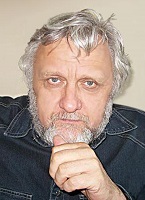Tofalars today: an attempt at repeat interval study
Keywords:
Tofalars; Tofalar language; Tofalar land; Irkutsk oblast; ethnodemographic processes; linguistic assimilation; ethnically mixed marriages; miscegenation; ethnic identityAbstract
living in the south-west of Irkutsk oblast, in the northern branches of the Eastern Sayans. Our study was held repeatedly with a 10-year interval in 1985, 1995, 2005 and 2015 during ethnographic expeditions. Each of the instances included a mass survey which covered 100% of Tofalar population.
A special focus was made on the Tofalar demographics, linguistic developments, the fall of endogamy and the rise of miscegenation. At present, the number of the Tofalars and the ethnic composition of the areas of their residence have stabilized. Indigenous population now accounts for over 50% of total population in the three Tofalar settlements of Alygdzher, Nerkha and Verkhnyaya Gutara. The natural increase of the population is falling, with a part of the population moving to cities, The use of Tofalar language has plummeted, the number of active users fell to slightly over 20, all of whom are old. Russian now prevails in every aspect of communication. Mixed marriages are at an all-time high, which indicates the fall of endogamy; however, in the last 20 or 30 years the number and share of mixed marriages have been decreasing. Mixed-blood individuals have long outnumbered pure-blood Tofalars, almost all Tofalar children are now multiracial. However, the overwhelming majority of mixed-blood people identify themselves as Tofalars, which is probably motivated by state benefits for small indigenous ethnicities and/or by Tofalar men’s commitment to traditional lifestyle. However, of all traditional occupations only hunting has been preserved, with reindeer herding down at an all-time low.
We conclude that Tofalars are undergoing a fast transformation into a mixed-blood group of Russian speakers who nevertheless have preserved a stable ethnic identity and some of the traditional male occupations.
References
Krivonogov, V. P. (1987) K sovremennoi etnicheskoi situatsii v Tofalarii. Sovetskaia etnografiia, no. 5, pp. 81–90. (In Russ.).
Krivonogov, V. P. (1988a) «Demograficheskii vzryv» u tofalarov. Istoriografiia i istoriia izucheniia istoricheskogo opyta osvoeniia Sibiri. Novosibirsk, vol. 2, pp 23–24. (In Russ.).
Krivonogov, V. P. (1998b) K metodike izucheniia etnicheskikh i kul'turnykh protsessov v Tofalarii. In: Istochniki i metody issledovaniia sotsial'nykh i kul'turnykh protsessov, ed. V. P. Korzun. Omsk, OmGU. 183 p. Pp. 159–166. (In Russ.).
Krivonogov, V. P. (1998) Etnicheskie protsessy u malochislennykh narodov Srednei Sibiri. Krasnoiarsk, Izd-vo Krasnoiarskogo gosudarstvennogo universiteta. 320 p. (In Russ.).
Krivonogov, V. P. (2008) Tofalary: Tri shaga v budushchee. Krasnoiarsk, KGPU imeni V. P. Astaf'eva. 198 p. (In Russ.).
Rassadin, V. V. (2001) Formirovanie tofalarskogo etnosa. Vestnik Buriatskogo Nauchnogo Tsentra Sibirskogo Otdeleniia Rossiiskoi Akademii Nauk, no. 2, pp. 112–119. (In Russ.).
Published
How to Cite
Issue
Section

Author(s) license holder(s) grant rights for their work to the journal (grantee of a license) under the simple non-exclusive open license in accordance with Art. 1286.1 «Open license for a research work, work of literature or fine arts», Civil Code of the Russian Federation.
New Research of Tuva publishes articles under the Creative Commons Attribution-NonCommercial license (CC BY-NC).
Since it is an open license, author(s) reserve the right to upload the article to their institutional repository, submit it to another journal (if it allows republications), or republish it on their own website (in full, or in part).
However, several conditions apply here:
a) The republished version must always contain the name(s) and affiliation(s) of the author(s), the original title and the hyperlink to the original version on the New Research of Tuva website;
b) It must be in open access, free of charge, and no category of readers must be in any way whatsoever advantaged over general readership.
c) should the contribution be submitted elsewhere by its author(s) without substantial modification (30% or more of original text unchanged), the body of the article should contain a disclaimer that the original version was published in New Research of Tuva (with a link to the respective page)
The CC-BY-NC is a non-revocable license which applies worldwide and lasts for the duration of the work’s copyright.





